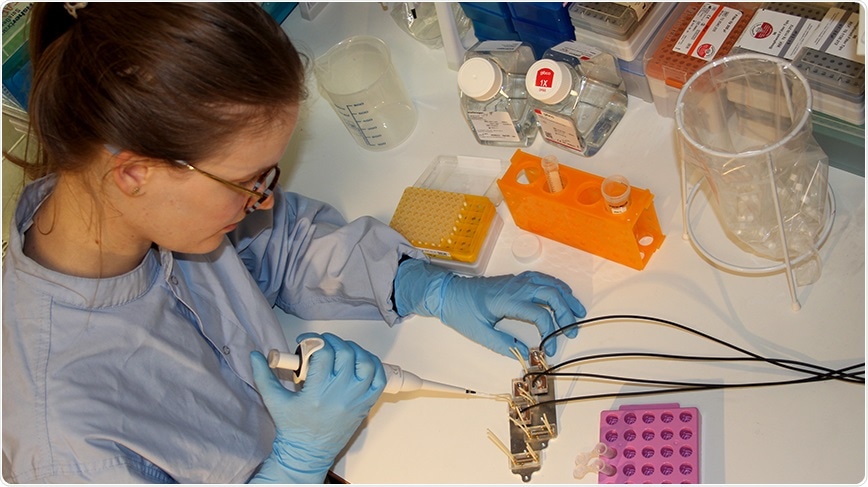Researchers from the KTH Royal Institute of Technology in Sweden used an experimental model to replicate the blood-brain barrier and successfully demonstrated how antibody guards the brain against inflammation induced by neurodegenerative disorders, like Parkinson’s and Alzheimer’s disease.

Isabelle Matthiesen prepares the brain-on-chip device for testing. Image Credit: Saskia Ludwig.
The research work was performed as proof of concept by brain model developers from the KTH Royal Institute of Technology in Stockholm. The study explicitly revealed how the blood-brain barrier responds to increased levels of inflammation subsequent to the administration of a novel derivative of a commonly used anti-inflammatory drug, called NAC (N-acetylcysteine).
NACA (N-Acetylcysteine Amide), which was tested for the first time with human stem cell-derived cells, revealed that the breakdown of the blood-brain barrier under high loads of inflammation is “actually more complex than we thought” stated KTH researcher Thomas Winkler.
The results of the study were published in the Small journal.
This was the first test of this NACA compound with human stem cells. The results show that we can use this to test other derivatives of the NAC compound—as well as different antioxidants—and see if we find anything that has even higher neural protection.”
Thomas Winkler, Researcher, KTH Royal Institute of Technology
According to Isabelle Matthiesen, a Ph.D. student from KTH, the study is not intended to offer conclusive proof of the effect of anti-inflammatories on the brain but the results indeed provide encouraging proof that the model could substitute the testing of drugs on animals prior to clinical trials.
We successfully based the barrier on human stem cell-derived cells so this model is relevant to drugs being testing for humans, while other models are made with animal cells, or they are too simple to monitor closely.”
Isabelle Matthiesen, Study Co-Author and PhD Student, KTH Royal Institute of Technology
The “brain-on-chip” model developed by the scientists is, in fact, a two-layered setup in which tiny channels carry replicated blood and inflammation agents, and also anti-inflammatory drugs, via compartments mimicking the perivascular space inside the brain, and the external vascular system.
Similar to the real brain, the two areas are divided by a blood-brain barrier—a cell membrane lining the brain’s blood vessels. And this layer is held together by tight junctions that inhibit small molecules from penetrating via the gaps between the cells. The barrier acts as a filter to prevent toxic substances from entering the brain tissue from the bloodstream.
The barrier in the new model is denoted by a cell membrane derived from the stem cells of a solo patient and weaved together with proteins. Electronic sensors are used to monitor cell activity and these sensors can take measurements each minute as the barrier is subjected to stress similar to the one caused by neurodegenerative diseases.
According to Winkler, the explicit detail is very crucial because several cellular processes occur rapidly.
As an example, when you first administer a drug, it causes a huge change in cells, then levels out. In the typical methods of testing drugs, you wouldn’t see those rapid changes. We can now see that the breakdown of the blood-brain barrier happens fast under stress and we could see how that could be prevented with the anti-oxidant.”
Thomas Winkler, Researcher, KTH Royal Institute of Technology
Source:
Journal reference:
Matthiesen, I., et al. (2021) Continuous Monitoring Reveals Protective Effects of N-Acetylcysteine Amide on an Isogenic Microphysiological Model of the Neurovascular Unit. Small. doi.org/10.1002/smll.202101785.